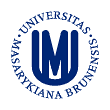



Situs describes the posision of the cardiac atria and viscera. Morphological right atrium has a blunt atrial appendage with a wide orificium, morphological left atrium had a finger like appendage with a narrow orificium. POsition of the atria corresponds to the position bronchi and lungs.
Normal position of the inner organs is called situs solitus (usual position).
In situs inversus the position of cardiac atria and viscera is mirror image of the normal position: morphologic right atrium is on the left and morphologic left atrium is on the right. Pulmonary anatomy is reversed. Gallbladder is on the left, spleen and stomach are on the right. Situs inversus is present in 0.01% of the population. Kartagener syndrome of ciliary dyskinesis affects about 20% of individuls with situs inversus.
Direction of the cardiac apex in situs inversus:
The most complicated situation is observedn in situs ambiguus (undetermined position). The right-left organ symmetry is disturbed. Right symmetry predominates in dextroisomerism, left symmetry in levoisomerism. Both atria are morphologically right atria in dextroisomerism. Both atria are morphologically left atria in levoisomerism. Severe complex heart anomalies are almost always associated. The incidence is 1 : 6 000 – 20 000.
Dexteroisomerism: bilateral trilobed lungs, symmetric liver, spleen is missing, heart defects (mostly AV septal defect, aplasia of the atrial septum, total anomalous pulmonary venous connection, systemic venous anomalies, transposition of the great arteries, dextrocardia). Also called the asplenia syndrome.
Levoisomerism: both lungs are bilobed, symmetric liver, more spleens are present (polysplenia), heart defects (atrial septal defect, atrioventricular or ventricular septal defects, systemic venous anomalies). Also called the polysplenia syndrome.
Dextrocardia:heart position on the right side of the thorax, cardiac apex points to the right. Various heart defects are frequently associated. Dextrocardia is observed in situs solitus, situs inversus and situs ambiguus as well.
Ectopia cordis: heart located partially or totally outside the thoracic cavity. The most common forms is thoracic ectopie with the sternum completelly split or absent, and thoracoabdominal ectopia seen as a part of pentalogy of Cantrell. Ectopia is seen in abdominal wall defects and amniotic bands syndrome. There are intracardiac malformations associated in the majority. Ectopia cordis is quite rare and has poor prognosis.
Dextrocardia, fetus:
 Dextrocardia, Macro, autopsy (72055)
Dextrocardia, Macro, autopsy (72055)
Polysplenia in situs ambiguus, levoisomerism, 22-week fetus:
 Polysplenia, situs ambiguus, Macro, autopsy (72081)
Polysplenia, situs ambiguus, Macro, autopsy (72081)
 Polysplenia, Macro, autopsy (73207)
Polysplenia, Macro, autopsy (73207)
 Polysplenia, Macro, autopsy (73208)
Polysplenia, Macro, autopsy (73208)
 Polysplenia, Macro, autopsy (73209)
Polysplenia, Macro, autopsy (73209)
 Polysplenia, Macro, autopsy (73210)
Polysplenia, Macro, autopsy (73210)
 Polysplenia, Macro, autopsy (73211)
Polysplenia, Macro, autopsy (73211)
Polysplenia, hydrops:
 Polysplenia, fetal hydrops, Macro, autopsy (73201)
Polysplenia, fetal hydrops, Macro, autopsy (73201)
 Polysplenia, fetal hydrops, Macro, autopsy (73202)
Polysplenia, fetal hydrops, Macro, autopsy (73202)
 Polysplenia, fetal hydrops, Macro, autopsy (73203)
Polysplenia, fetal hydrops, Macro, autopsy (73203)
 Polysplenia, fetal hydrops, Macro, autopsy (73204)
Polysplenia, fetal hydrops, Macro, autopsy (73204)
 Polysplenia, fetal hydrops, Macro, autopsy (73205)
Polysplenia, fetal hydrops, Macro, autopsy (73205)
 Polysplenia, fetal hydrops, Macro, autopsy (73206)
Polysplenia, fetal hydrops, Macro, autopsy (73206)
Situs inversus:
 Situs inversus, Macro, autopsy (73212)
Situs inversus, Macro, autopsy (73212)
 Situs inversus, Macro, autopsy (73213)
Situs inversus, Macro, autopsy (73213)
 Situs inversus, Macro, autopsy (73214)
Situs inversus, Macro, autopsy (73214)
 Situs inversus, Macro, autopsy (73215)
Situs inversus, Macro, autopsy (73215)
 Situs inversus, Macro, autopsy (73216)
Situs inversus, Macro, autopsy (73216)
 Situs inversus, Macro, autopsy (73217)
Situs inversus, Macro, autopsy (73217)
 Situs inversus, Macro, autopsy (73218)
Situs inversus, Macro, autopsy (73218)
Asplenia:
 Asplenia, dextrocardia, maceration, Macro, autopsy (72134)
Asplenia, dextrocardia, maceration, Macro, autopsy (72134)